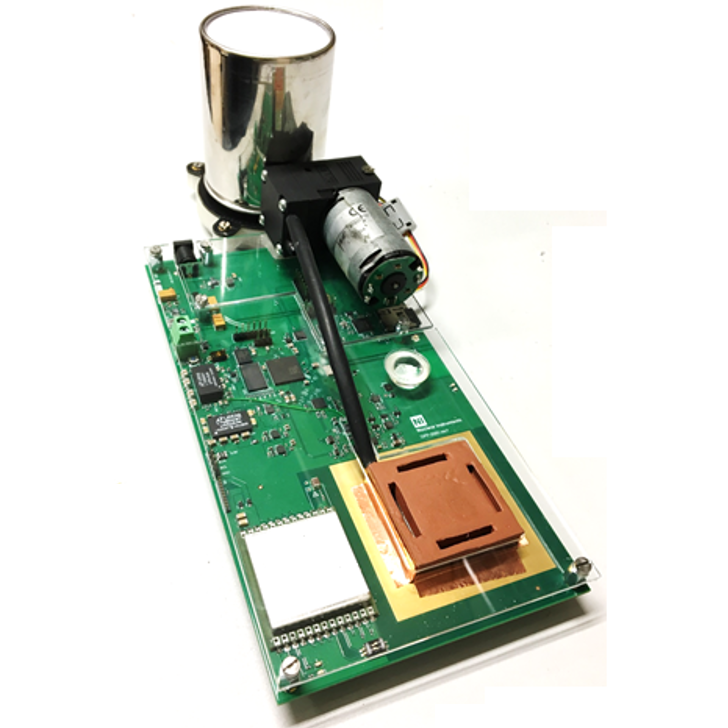Radon is a natural radioactive gas from the decay of uranium, a naturally occurring element in soil and rocks. It easily escapes from the soil and accumulates in dwellings and buildings. The progeny from radon decay is radioactive and becomes attached to dust and particulate in the air: when inhaled, this radioactive particulate settles in the lung and over time can cause lung cancer. Radon is the second leading cause of lung cancer after smoking.
At CERN, we have prototyped an innovative radon monitoring device RaDoM and developed a cloud based service to collect and analyse the data, to control the measurements and to drive mitigation measures based on real time data.
Currently licensed to BAQ - A Better Air Quality Company.
Advantages & Applications
RaDoM (Radon Dose Monitor) directly estimates the dose – the radiological relevant quantity for estimating the risk of lung cancer – by reproducing the energy deposition inside the lung and avoiding a number of assumptions that must be made in deriving the dose from a measurement of radon concentration in air.
It can produce one accurate measurement of radon concentration every ten minutes: this time resolved measurements assess the real radiological risk, given the variability of radon levels. Important information as the position of the sensor, time correlation between sensors, possible anomalies and ancillary environmental data can be collected and organised in the same data structure.
This is a completely forward-looking development, in the line of Smart Cities and Smart Homes. Mainly this technology will have a focus on:
- HVAC industry: Heating, Ventilation and Air Conditioning.
- Schools, kindergartens and public buildings (such municipalities, cantons, federal offices).
- Radon prone workplaces: waterworks, tunnels, mines and poorly ventilated underground operations.
Specifications
- The effective dose of radon is measured by pumping air through filters that reproduce the behaviour of the human respiratory tract.
- 10-minute time resolution.
- Embedded shock, temperature and humidity sensors.
- Optional environmental sensors, e.g. CO2.
- Cloud service based on real time data for data collection, storage and communication.
- Communication interfaces: Ethernet 10/100 Mbps, WiFi 802.11 b/g/n, LTE, LoRa (planned).
- Data accessible via computer or smartphone.

